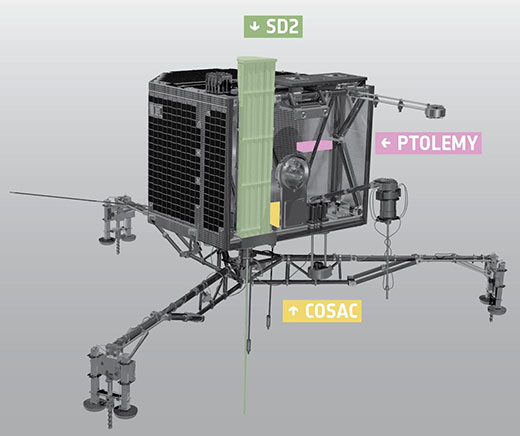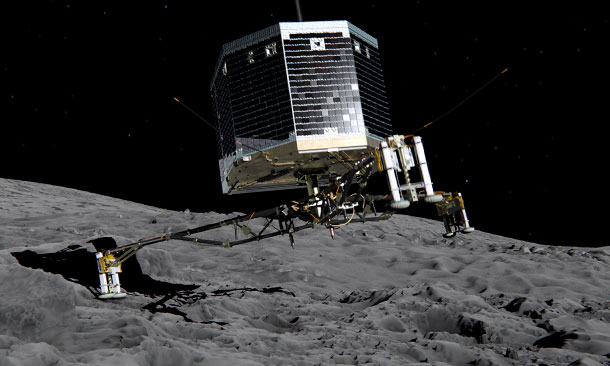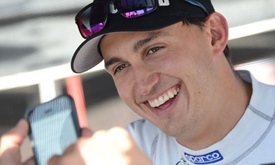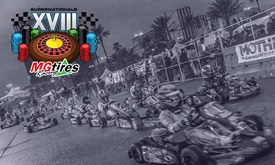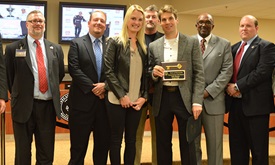Dallara's input in mission is out of this world
NOV 19, 2014
Periodically, Andrea Toso says, he would gaze at the night sky and wonder if the tiny Rosetta spacecraft traveling in the vastness of space would reach its target.
The probe was launched in 2004 with the objective of landing on Comet 67P/Churyumov-Gersimenko and completing quantitative analysis of the mysterious ball of jagged ice and rock that is so large it would flatten downtown Chicago if it hurtled to earth.
“Then it goes out and sleeps for 10 years like Sleeping Beauty, drifting deeper into the depths of the solar system,” says Toso, head of research and development and the U.S. business leader for Dallara Automobili.
His interest in the project exceeds astronomy and engineering. Toso led the team of Dallara engineers and technicians that designed the drill that is part of the Philae robotic lander that accomplished the initial part of its mission Nov. 12 by reaching the comet’s surface.
Toso, a graduate of Politecnico di Milano with a degree in aeronautical engineering, was approached about designing and manufacturing the drill because of Dallara’s experience with composites and lightweight structures. The framework and requirements were provided, but because this was the initial foray to a comet there wasn’t historical data and experimentation.
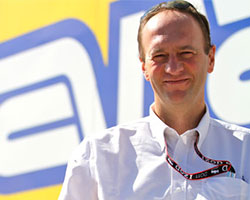 “That was back in 2001 … a lot of IndyCars have been built in the years since,” says Toso of the long relationship between the Italian motorsports company and INDYCAR. “At that time NASA was strong with the shuttle and the European Space Agency, which is a consortium of European space agencies, was looking for a lower-budget project. The Italian Space Agency came out with this idea of going to a comet. That was approved, they got the funding and involvement of all the countries and they appointed the Politecnico di Milano to lead the scientific side of it.
“That was back in 2001 … a lot of IndyCars have been built in the years since,” says Toso of the long relationship between the Italian motorsports company and INDYCAR. “At that time NASA was strong with the shuttle and the European Space Agency, which is a consortium of European space agencies, was looking for a lower-budget project. The Italian Space Agency came out with this idea of going to a comet. That was approved, they got the funding and involvement of all the countries and they appointed the Politecnico di Milano to lead the scientific side of it.
“It sounds easy; go and manufacture a drill. But no one has ever tried it. It was a mental experiment and there were no ways to prove it would work. One has to replicate a journey of 10 years. You cannot test for 10 years. The race car driver, the engineer always want to test before a race. With this mission, it was not possible.
“The lesson I will remember forever is to think outside the box.”
The mechanical unit of the Sampling, Drilling and Distribution (SD2) device consists of a carbon fiber toolbox, a composite material drill and a rotating carousel. Pristine “tastes” are to be extracted from a maximum depth of about 23 centimeters by a tube extended from the drill bit to pick up the sample. The drill is then moved back to its home position, ready to deliver the sample to one of the 26 ovens mounted on a rotating carousel that will heat samples to different temperatures to release frozen gasses for analysis by the COmetary Sampling And Composition (COSAC) and PTOLEMY experiments.
Over the three years of development, the team had to plan and cope with strong requirements in terms of low mass, low power consumption, a wide operative range and extreme environmental conditions.
“For example, in the deep space there are no aerodynamics because there is no air so there is no thermal convection,” Toso explains. “When you’re hot, the air takes away heat from you. In deep space, there is no air and there is no way to dissipate this heat from the friction of the drill bit when it penetrates the surface of the comet. There is no gravity, so all the material and debris to get out of comet will escape and go into deep space. We had to design tubes to bring all the small debris into small plates. And we had to design the drill with no lubrication.
“ ‘Less is more’ is a slogan often used in sports and is very suitable for this adventure. When you think of this mission, half is exposed to sunlight at 300 degrees Fahrenheit and the other side is in a deep, deep shadow at negative 300 degrees Fahrenheit. You have to select materials at zero thermal expansion. It makes you rethink everything.”
Toso laughs, noting the decade of engineering advancement with the aid of computers.
“It was another generation,” he says.
The SD2 drill was deployed in the first round of experiments. On Nov. 14, because of the lander’s solar array orientation, its batteries discharged and Philae went into hibernation. The ESA said it is possible that by August 2015, when the comet has moved much closer to the sun in its orbit, the lander's solar panels will receive enough illumination for it to reawaken.
Toso, who won the 2014 BorgWarner Louis Schwitzer Award that recognizes individuals for innovation and engineering excellence in race car design associated with the Indianapolis 500, has waited more than 10 years to hear of discoveries, so another nine months will pass quickly.
“Essentially, two principles lead us to knowledge. The first is the search for knowledge to satisfy a curiosity pure and powerful,” Toso says. “The second is research in order to improve the condition of human life.”
